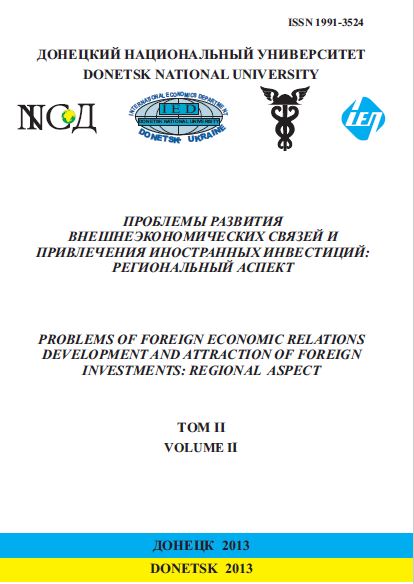The investigation of the scale of Lithuania’s and Ukraine’s shadow economy
Ключові слова:
shadow economy, fiscal freedom, business freedom, opennessАнотація
Contemporary problem of the shadow economy is very topical for many countries in the world, it is also relevant for Lithuania and Ukraine. Many authors offer their methods to estimate the shadow economy. Different methods produce different results, so several methods at once are applied to better understand the situation. The study of the shadow economy, conducted Schneider (2007) showed that Lithuania and Ukraine were in the same group - the developing countries. In terms of 1999 - 2006 years shadow economy in Ukraine is the largest, and in Lithuania, almost the average of the group. Ukraine is an important indicator - inflation, and for Lithuania - openness, freedom of enterprise, both countries are important indicators of unemployment, fiscal freedom and GDP (gross domestic product) / per 1 citizen of the country. Adopted an attempt to predict the shadow economy of both countries has shown that there is a downward trend in the unrecorded economy in 2014 28.3% in Lithuania and 48.8% in Ukraine.Посилання
European Commission. Eurostat. [2012-12-20]. http://epp.eurostat.ec.europa.eu/portal/page/portal/statistics/search_database
Lietuvos Respublikos Finansų Ministerija. Valstybės biudžeto vykdymo duomenys. [2012-12-25]. http://www.finmin.lt/web/finmin//auktualus_duomenys/biudzeto_pajamos/valstybes_biudzetas
Bivainis, J.; Skaičkaiskienė, I. (2007). Mokesčių sistemos vertinimo metodinio potencialo analizė. Verslas: teorija ir praktika, p. 57-67.
Krumplytė, J. (2008). Šešėlinės ekonomikos samprata ir priežasčių analizė. Ekonomika ir vadyba: aktualijos ir perspektyvos, p. 234-250.
Lietuvos bankas. Makroekonominės prognozės. [2012-04-01].< http://www.lb.lt/makroekonomines_prognozes>
Lietuvos laisvosios rinkos institutas. Lietuvos ekonomikos tyrimas 2011/2012 (1).< http://files.lrinka.lt/LET28.pdf>.
Nausėda G. (2012). Lietuvos ekonomika euro zonos problemų fone. Valstybė, No. 3. p. 46 – 48.
Startienė G.,Trimonis G. (2009). Oficialiai neapskaitomos ekonomikos mastas. Economics & Management. No.14.
State Statistics Service of Ukraine. [2012-12-15]. http://www.ukrstat.gov.ua/
Sharpe, M.E. (2007). What is the Underground Economy? ISSN 1097203X The Japanese Economy, Vol.34, No.2, pp. 7-19.
Schneider F., Buehn A., Montenegro E.C. (2010). Shadow economies all over the world: new estimates for 163 countries from 1999 to 2007. Policy research working paper No. 5356.
Schneider, F.,Enste, D.H. (2000). Shadow Economies: Size, Causes and Consequenses. Journal of Economic literature, Vol. XXXVIII.
Schneider F. (2011). The shadow economy in Europe. Using electronic payment systems to combat the shadow economy. [2012-03-05]. http://www.visaeurope.com/idoc.ashx?docid=4d53b726-cd71-4ba5-a50b-735d11ca4075&version=-1
The Heritage Foundation. Index of Economic Freedom. [2012-11-31]. http://www.heritage.org/index/
The World Bank. [2012-12-25]. http://data.worldbank.org/country/

